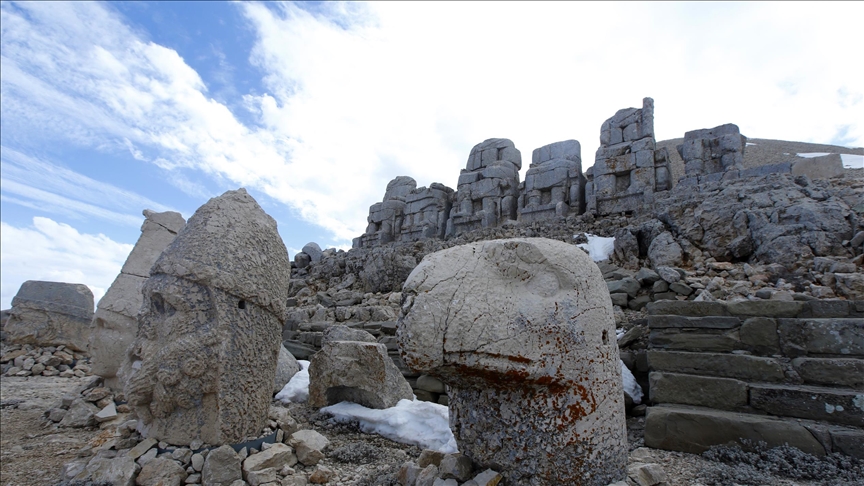

By Anadolu Agency
ADIYAMAN, GAZIANTEP, Türkiye
The monumental stone heads of Mount Nemrut and other UNESCO-listed statues in southeastern Türkiye were not damaged in the powerful earthquakes that shook the region last month.
The archaeological and UNESCO World Cultural Heritage site on Mount Nemrut, towering at a height of 2,150 meters (about 7,050 feet), survived the earthquakes undamaged.
Footage captured by Anadolu showed the massive heads, each of weighs tons, on the eastern face of the mountain in Adiyaman province.
Irfan Cetinkaya, head of a local culture and tourism association in the province’s district of Kahta, where Mount Nemrut is located, noted that the earthquake caused severe damage in the region.
“The only thing that makes us happy is that the statues on Mount Nemrut were not affected by the tremors. I went to Mount Nemrut two days after the quake, and saw that the statues were not damaged even though Adiyaman suffered a great disaster,” said Cetinkaya.
Inviting visitors to the region, Cetinkaya said: “Hundreds of thousands of people come to the region every year. Especially this year, we want more people to visit Mount Nemrut. We want them to come to the region to give us morale, to heal our wounds, as well as to see Mount Nemrut.”
Meanwhile, artifacts in the Yesemek Open Air Museum and Sculpture Workshop, an archaeological site in the southern Gaziantep province which was also severely hit by the quakes, also survived the Feb. 6 tremors unscathed.
The historical area that is included on the UNESCO World Cultural Heritage Tentative List and is located in the town of Yesemek in Islahiye district, is home to artifacts from the early Hittite civilization, which existed in the 13th century BC, with stone statues weighing up to 10 tons.
“I was curious about the state of the museum after the earthquake as they (tremors) were so severe. I went to the museum. There was no destruction here, all the artifacts were still standing,” Museum officer Ali Cicek told Anadolu.
More than 46,100 people have been killed in the back-to-back earthquakes that struck on Feb. 6.
The magnitude 7.7 and 7.6 quakes struck 11 provinces — Adana, Adiyaman, Diyarbakir, Elazig, Hatay, Gaziantep, Kahramanmaras, Kilis, Malatya, Osmaniye, and Sanliurfa. More than 13.5 million people in Türkiye have been affected by the devastating quakes, as well as many others in northwestern Syria.
We use cookies on our website to give you a better experience, improve performance, and for analytics. For more information, please see our Cookie Policy By clicking “Accept” you agree to our use of cookies.
Read More